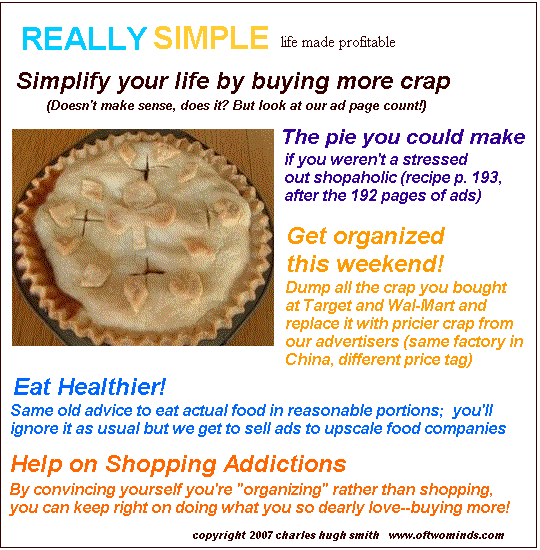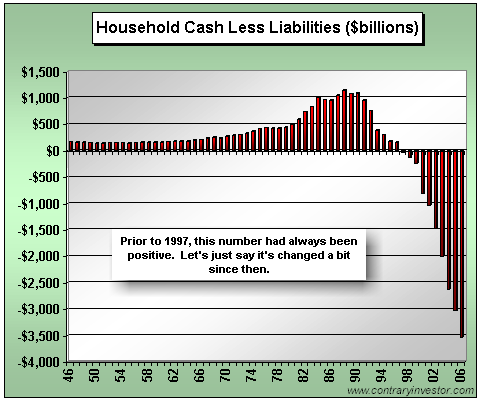

|
| weblog/wEssays archives | home | |
|
Really Simple Recession (February 5, 2007) Since the U.S. savings rate has fallen to a 74 year low of minus 1% (matching the low during the Great Depression), it's clear the U.S. consumer continues to spend with unparalleled abandon. To capitalize on our heedless spend-spend-spend era, I'm trying to interest publishers in a new magazine. Here's my first cover design: 
How much longer can U.S. consumers keep borrowing cash against assets and spending the cash? Frequent contributor U. Doran sent in a cogent Consumer Status Report from contaryinvestor.com which suggest the seemingly endless rise of the debt/asset bubble is topping out. This chart from the report says volumes about the sustainability of rampant consumer spending. 
But Americans are "so much richer" due to the rise in their homes, stocks and pensions that a little extra debt is no big deal. While that appears true when all assets are rising, now that house prices are declining (and recall that a 0% price change is a 2% decline if inflation is 2%) and the stock market is nearing the final blow-off stage of a 5-year long Bull run, what happens if all asset classes start dropping? "But bonds will rise," the answer comes; maybe, but the vast majority of bonds are held by the top 1% of the populace. Average Joe and Jane don't own any bonds, so a modest rise in bonds (which is by no means guaranteed) does nothing for their sinking asset base. Maybe it helps their pension fund or 401K, but since they can't borrow against those assets, that's still no prop for further consumer borrowing and spending. So what's the future? It's "Really Simple": less borrowing, less spending, and a normal business cycle contraction. Contraction, recession--choose your favorite label, but the results will be the same: spending drops, savings rise, businesses shrink, tax revenues plummet. For more on this subject and a wide array of other topics, please visit my weblog. copyright © 2007 Charles Hugh Smith. All rights reserved in all media. I would be honored if you linked this wEssay to your site, or printed a copy for your own use. |
||
| weblog/wEssays | home |